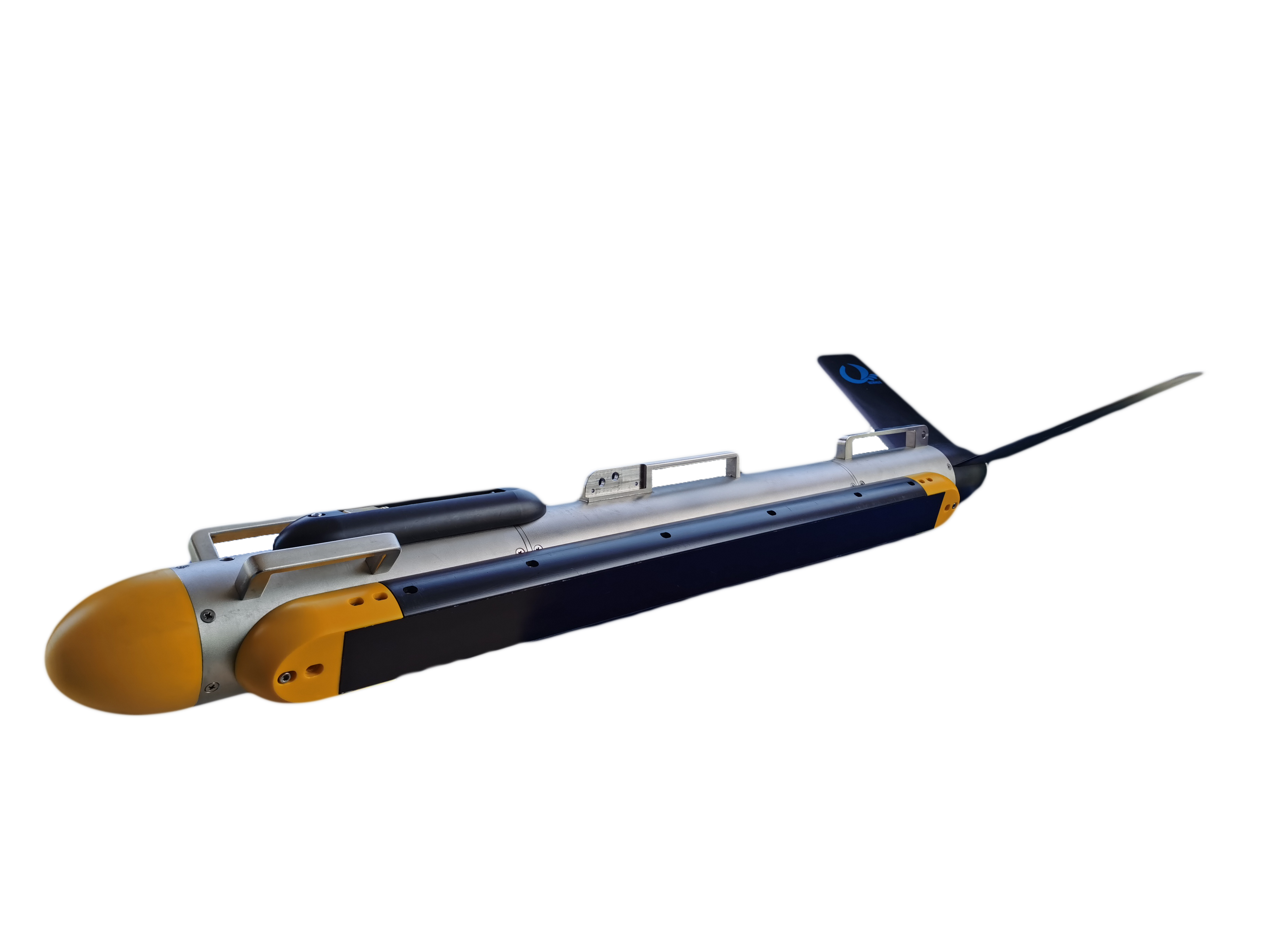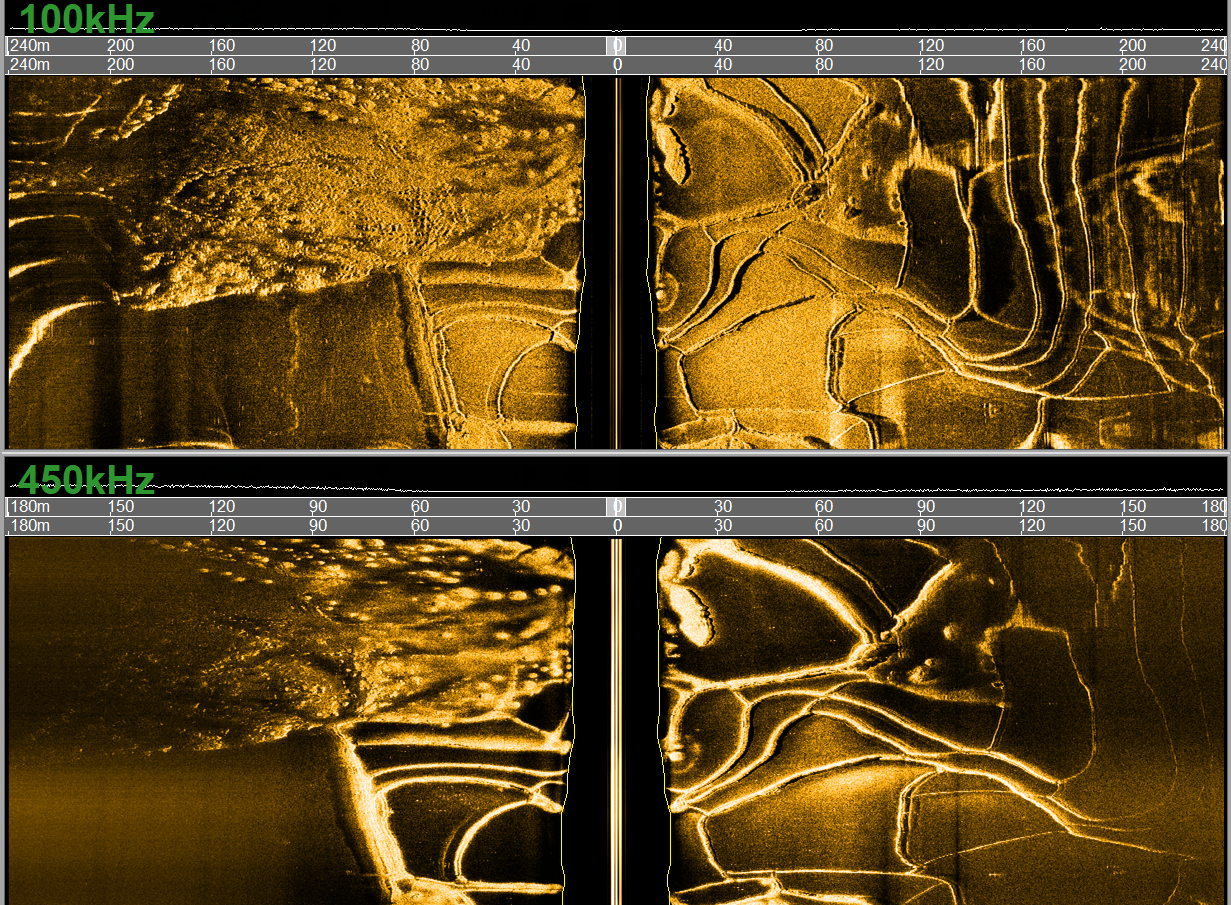



Shark-S100DP Deep-Water Dual-Frequency Side Scan Sonar is a versatile sonar system designed for surveys in deeper waters. It features dual-frequency (100 kHz and 400 kHz) simultaneous transmission and reception, along with Chirp modulation processing technology, enabling wide swath coverage while ensuring high-resolution imaging.
The sonar system features a rugged stainless-steel towfish, armored Kevlar cable, splash-proof deck unit, and intuitive OTech software. Engineered for durability and reliability, the towfish supports multiple mounting options, including towing, bottom deployment, and side-hull installation. The Shark-S100DP can be optionally equipped with a USBL positioning system, and a magnetometer interface is available for seamless integration with external magnetometers. A towing overload protection structure is incorporated to effectively safeguard against impacts. The towfish is hydro-dynamically designed to ensure stable towing performance. The system can be powered by either AC mains or a battery-powered inverter, while maintaining exceptionally low power consumption.
The proprietary OTech software combines ease of use with powerful functionality, offering features such as real-time image mosaicking, sonar image waterfall display, survey line planning and navigation, track tracking and coverage display, data recording and playback, target management and export, and multi-window sensor information display. The software utilizes adaptive equalization processing technology to ensure consistent image quality across both near and far ranges. With minimal parameter settings and a user-friendly UI design, it is straightforward to operate. It supports output in the standard XTF format, compatible with third-party post-processing software. The enhanced version of the software can output multiple raw data formats in real time for the development of AI-based automatic target recognition
Key Features
Sonar Specifications | Shark-S100DP |
Operating Frequency | 100kHz & 400kHz dual-frequency simultaneous operation |
Pulse Type | LFM (Chirp) / CW |
Maximum Range | 600m @100kHz,200m @400kHz |
Beamwidth | Horizontal: 0.6° @100kHz, 0.2° @400kHz Vertical: 50° |
Resolution | Along-track resolution: 0.01h (range) @100kHz, 0.003h @400kHz; Across-track resolution: 2.5cm @100kHz; 1.25cm @400kHz |
Transducer Mounting Angle | Adjustable downward angles of 10°, 15°, or 20° (factory set to 20°) |
Maximum Operating Depth | 2000m (Customizable up to 6000 meters) |
Standard Built-in Sensors | Single-beam echosounder, attitude sensor (pitch, roll, heading), pressure sensor |
Towfish Dimensions / Weight | 1283mm(L)×120mm(Dia.) / 50kg (316L stainless steel) |
Deck Unit Dimensions / Weight | 248mm(L)×192mm(W)×70mm(H) / 1.9kg |
Power Supply / Consumption | 220/110VAC, 60W |
OTech Software | Real-time mosaicking; live online mapping; OTSS and XTF formats recording; SDK development support; continuous raw data output. |
Interface | Ethernet Interface; optional magnetometer interface |
Tow Cable | Armored Kevlar cable, 100 meters (customizable); optional winch available |


